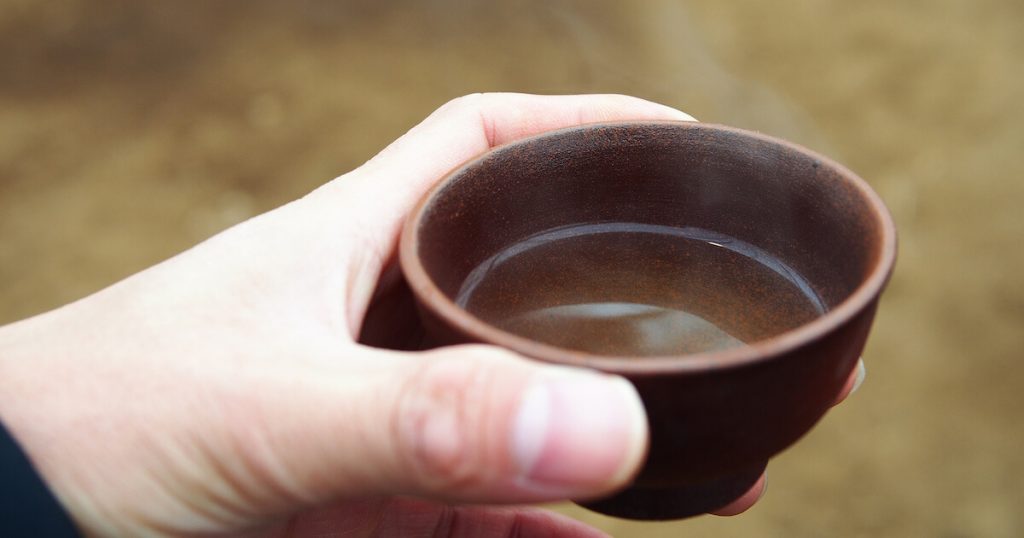The great Zen master Zhaozhou (Joshu)’s advice to seekers of the Way was “Go drink tea.” Zhaozhou’s contemporary, Zen Master Jiashan Shanhui, famously uttered, “Tea, Zen: one taste,” a phrase that adorns countless tea houses in China.
Both Zen and tea gained widespread popularity around the same time in ancient China. Historical records reveal that around the year 713, a certain Zen master named Xiangmo allowed his monks to drink tea in order to stay awake while meditating. Monks and laypeople throughout China then enthusiastically adopted this practice. Yet this alone is not the reason why tea came to symbolize enlightenment. It is also because drinking tea was seen as an ordinary, “signless” activity—just like enlightenment itself.
Years ago I visited Jiashan Shanhui’s temple, the famous Lingquan (“Spiritual Springs”) monastery in Hunan that was home to both Jiashan and the great master Foguo, composer of the koan collection Blue Cliff Record. In the abbot’s quarters hung a couplet, written by Jiashan upon his enlightenment:
The gibbon clutches her baby and returns to the mountain
Birds drop flowers on the Blue Cliff Spring
I worked with this for a long time before I understood it. As with many koans, the fundamental Zen teaching of signlessness provides the key. To understand this couplet, it is first necessary to know that the clear-flowing waters of the Blue Cliff Spring were renowned as an excellent source of water for tea.
“The gibbon clutches her baby and returns to the mountain” represents Jiashan’s signless enlightenment. Jiashan gave birth (in a sense), but there is no sign left from the experience (the ape “disappeared” into the mountain). The birds dropping flowers on the Blue Cliff Spring refers to a story about the Oxhead Master of Zen History, Niutou Farong, who was said to be so holy prior to his complete enlightenment that birds dropped flowers on his house. After his complete (signless) enlightenment, the birds stopped, because there was no sign left by which he could be seen as holy. So when the birds drop flowers on the Blue Cliff Spring, they pay homage not directly to Jiashan, but to the tea that represents his enlightenment.
This post is part of author and scholar Andy Ferguson’s new “Consider the Source” series. As an old Chinese saying goes, “When drinking water, consider the source.” In the coming weeks, Ferguson will ask and answer seemingly simple (but in the end, profound) questions about the “source” of East Asian Buddhism, weaving a tale of both spiritual inspiration and political intrigue.
Thank you for subscribing to Tricycle! As a nonprofit, we depend on readers like you to keep Buddhist teachings and practices widely available.
